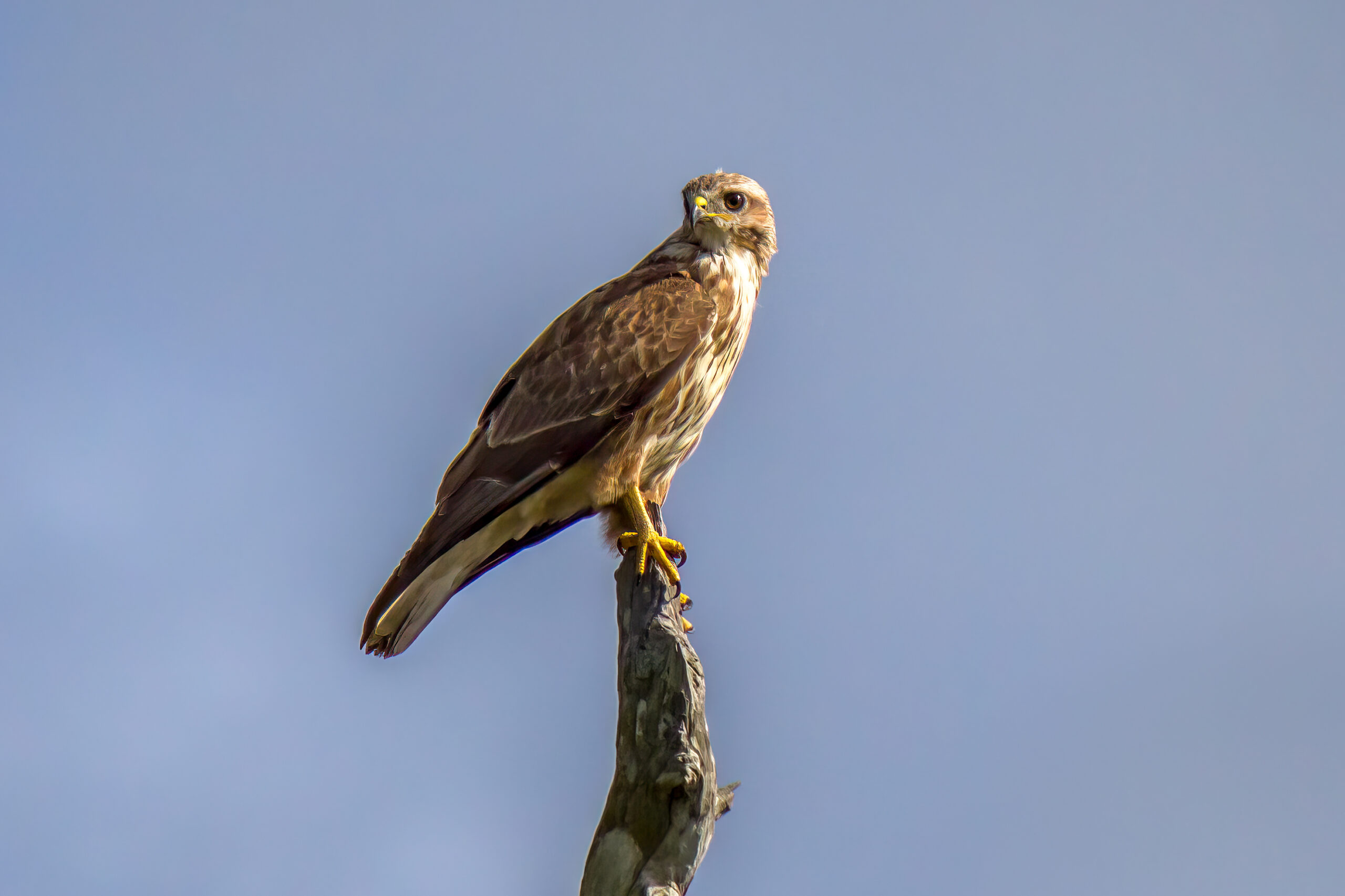Description
The jackal buzzard (Buteo rufofuscus) is a striking African buzzard species easily recognized with its red chest, underparts, and tail, contrasting the dark plumage spanning most of the rest of the body. Colour pattern and extent of red is variable between individuals. In flight, wings are white, edged with a black line. Juveniles are brown, with a rufous colour below and on the tail. This bird of prey reaches a length of 45 to 55 cm (18-21.5 in). Its call sounds like that of a black-backed jackal, hence the name “jackal buzzard”.
Diet & habitat
Jackal buzzards are often found in mountainous or hilly areas with adjacent grasslands, savanna, open woodlands, or semi-desert. It is one of few raptor species to be found on altitudes above 3000 m. Small mammals constitute most of its diet, with reptiles and small birds also frequently preyed upon. Invertebrates are occasionally caught. When food is scarce, such as during winter, it readily scavenges on carrion. Prey is generally spotted from either a perch or from flying at high altitudes. Prey is caught on the ground after a dive, and birds can be caught mid-air.
Nesting
Jackal buzzards are generally monogamous and solitary nesters, although females in Lesotho have been known to mate with two partners simultaneously, making these individuals polyandrous. Nesting season is from June to February, with peaks in July to September. Nests are created by both parents and made by branches topped with grass, lichen, and leaves. The nest is often situated on the edge of a cliff or in the large fork of a tree. One to three eggs are laid and incubated by the female for 39-40 days while the male feeds her. The female will stay and care for the offspring for two weeks after hatching, while the male continues to feed them. She will join him in the hunting when the chicks are older. The strongest of the chicks will commonly kill the weaker, and generally only one lives to leave the nest after 50-53 days. After around 70 days chicks are fully independent.
Status
Although the jackal buzzard is only found in southern Africa it is quite common in suitable habitats. Population is stable, numbers are high, and there are no immediate threats to the species. It is listed as least concern on the IUCN Red List.







